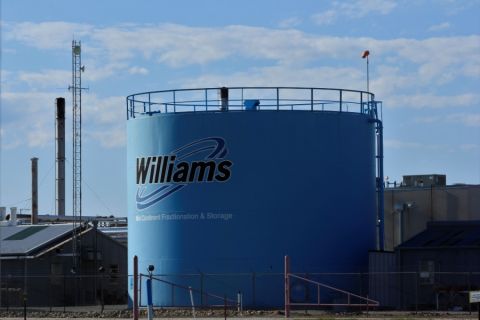Add the lesser prairie chicken to the list of possible threats to oil and gas development. The U.S. Fish and Wildlife Service (FWS) added the chicken, described as a medium-sized grayish brown grouse, to the list of threatened species in March, saying the species is likely to become endangered. The move came despite progress made as part a 2013-developed conservation plan, in which about 160 energy companies among others are participating. The goal is to increase the population to about 67,000. The move by the federal government has the Permian Basin Petroleum Association (PBPA) and four New Mexico counties crying foul. PBPA announced June 10 that a lawsuit was filed against FWS and the U.S. Department of the Interior. They allege the federal government violated the Administrative Procedure Act and failed “to fairly consider the expected benefits of conservation efforts already undertaken on millions of acres across five states to improve habitat for and diminish threats to the chicken.” The chickens, with their colorful plumes and stout builds, reside in many places but are known residents of Colorado, Kansas, New Mexico, Oklahoma and Texas. The species has been in trouble for the past 15 years, according to the FWS, as its population has declined mainly due to a habitat loss of about 84%. Its population is said to have plummeted 50% to a record low of 17,616 birds in 2013, compared to 2012. However, the PBPA said the FWS’ best current estimate is more than 34,000 in the five states. As part of the conservation plan, PBPA said companies must pay enrollment fees, follow practices intended to minimize impacts and pay for unavoidable damages and habitat restoration. If the latest counts are accurate, then it appears that the plan is working. Why was there a need to classify the chicken as threatened? In the March 27 news release, FWS said listing the species as threatened with a special rule under section 4(d) of the Endangered Species Act limits regulatory impacts on landowners and businesses from this listing. “The lesser prairie-chicken is in dire straits,” FWS Director Dan Ashe said in a press release. “Our determination that it warrants listing as a threatened species with a special rule acknowledges the unprecedented partnership efforts and leadership of the five range states for management of the species. Working through the WAFWA range-wide conservation plan, the states remain in the driver’s seat for managing the species—more than has ever been done before—and participating landowners and developers are not impacted with additional regulatory requirements.” FWS said it was under a court-ordered deadline to make a listing determination on the species by March 31. However, “The federal government’s listing decision further burdens not only the region’s oil and gas industry, but also ranchers, wind farmers and landowners,” Ben Shepperd, president of the Permian Basin Petroleum Association, said in a press release. “The public and private sectors had already designed and undertaken sensible conservation efforts that protect both the lesser prairie chicken and vital regional industries and landowners. These efforts were working before the Obama Administration imposed unnecessary new regulations on the region.” A Q&A section on the FWS website stated “landowners and companies enrolled in the WAFWA range-wide plan can continue to manage their land or continue oil and gas operations and will not be subject to additional restrictions or required to undertake additional actions as a result of the lesser prairie chicken being listed, as long as they continue to conduct their activities pursuant to the range-wide plan or the LPCI.” The federal government is frequently accused of imposing unwarranted regulations. Sometimes the so-called unnecessary regulations are indeed necessary. But that doesn’t appear to be the case in this instance. The plan seems to be working. Perhaps the feds needed the designation to ensure participants continue to abide by the plan. It’ll be interesting to see how this one pans out in court. If anyone is interested in following the case, it is before the U.S. District Court for the Western District of Texas, Midland-Odessa Division and the case number is 7:14-cv-00050, according to a news release. Contact the author, Velda Addison, at vaddison@hartenergy.com.
Recommended Reading
‘Oversupplied’ NatGas Market Aiding Williams’ Storage Business
2024-05-08 - Midstream company Williams saw overall demand growth as heavy gas volumes passed through its network.
Energy Transfer Eyes Draft Environmental Statement for Blue Marlin Project This Quarter
2024-05-09 - Energy Transfer is among several firms vying to build deepwater ports along the Texas Gulf Coast.
Energy Transfer Remains Hungry for M&A, Sees 1Q Oil Volumes Surge
2024-05-09 - Energy Transfer reported record first-quarter crude volumes and expects demand for petrochemicals to continue rising.
Enbridge Plans to Increase Permian Oil Pipeline’s Capacity
2024-05-10 - Midstream company Enbridge announced an open season on the Gray Oak Pipeline for a proposed 120,000 bbl/d expansion and updated its M&A efforts.
Developer Seeks Permit to Send US Gas to Mexico for LNG Exports
2024-05-22 - The project is the latest in a series of developments to convert U.S. gas into LNG and export it from Mexico's Atlantic and Pacific coasts to meet global demand.



